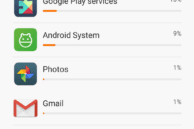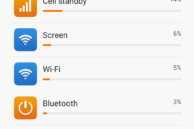
Within five short years, Xiaomi has made a reputable name for itself in the smartphone market. The company’s formula of selling phones at almost their cost price and then making money by providing services through them has been a huge hit in China and markets like India.
However, 2015 was a relatively rough year for the Chinese company. The lack of its much anticipated flagship, the Mi 5, and some less than interesting mid-range devices saw the company miss its estimated sales figure for the year. Worse, this allowed other local Chinese OEMs like Huawei and Lenovo to surpass Xiaomi with their offerings.
Determined to make a mark, Xiaomi is back this year with a bang. After the impressive Redmi Note 3, the company launched its much anticipated flagship — Mi 5 — at the Mobile World Congress in Barcelona this year. The handset made its way to India earlier this month, and this is our review of Xiaomi’s flagship handset of 2016.
Design
At first glance, the Xiaomi Mi 5 might look similar to the Galaxy S6 or Galaxy S7 with its glass back and front, but the design of the handset is an evolution of the Mi Note Pro that launched in early 2015. Like the Note, the Mi 5 sandwiches an aluminium chassis between the glass panels at the front and rear. To aid ergonomics, the rear glass is curved at the edges that makes it easier to grip the phone. Nonetheless, being a phone that is made from glass, the Mi 5 does have a tendency to slip from one’s palm when held at extreme angles.

Unlike other phones, the Xiaomi Mi 5 features a flushed camera at its rear — a rarity in smartphones of today. This is despite the phone being a mere 7.3mm thin, which is 0.6mm thinner than the Galaxy S7. The front of the Mi 5 looks similar to the Mi 4, though it does come with reduced side bezels.
The bottom part of the phone looks reminiscent of the Galaxy S7 due to the physical home button. The two capacitive keys flanking the button are backlight, but are just two dots rather than depicting their functionality. Since it is possible to customise the functionality of the two buttons in MIUI, it makes sense for Xiaomi to ditch the icons for the buttons. The physical home button features an integrated fingerprint scanner, and it can also be made to act as a capacitive button. While the fingerprint scanner works as intended and is plenty fast, I found the home button to be a bit too small for my liking.

The power and volume buttons are both located on the right edge of the handset, with the top housing the IR blaster, microphone hole, and the 3.5mm audio jack. The USB Type-C port on the phone is located right in the middle at the bottom where it is flanked by speaker grilles on its left and right.
Xiaomi currently only sells the Mi 5 in white in India, which in my opinion does not do justice to the beautiful glass body of the phone. In black, the Mi 5 looks drop dead gorgeous, but the color makes the phone a fingerprint magnet then.

Credit where its due: Xiaomi has truly set a benchmark in terms of build quality for other sub $400 phones to follow. While we have had some impressive phones launched under the sub-$400 range over the last couple of years, none of them feature a design and build quality as solid as the Mi 5.
Display
The Mi 5 comes with a 5.15-inch Full HD IPS LCD. Xiaomi says that this is not a run of the mill panel as the LCD is powered by 16 LEDs that allow it to reach higher brightness levels (up to 600 nits). That’s not all, the usual display related features that are found in other Xiaomi devices like Sunlight Display and Read mode are also present.
All that tech jargon leads to the Mi 5 having an absolutely fantastic display. Sure, its not AMOLED, but you are really going to struggle to find any issues with it. The display on the Mi 5 is really as good as LCDs can get. Its laminated so icons feel like they are floating on the glass surface; has great viewing angles; can great really bright and dim; and has great contrast ratios as well.

The thin side bezels coupled with the ergonomic design help in making the Mi 5 feel compact, something which quite a few other 5-inch phones lack. My only complaint is not with the display itself, but with the black borders surrounding the display. It spoils the look of the handset and is an eyesore on the white variant. I did get used to it after using the phone for a few days, but its not something that I like.
Software & Performance
Just like other devices from Xiaomi, the Mi 5 runs on MIUI 7. The major difference here is that it is the first phone from the Chinese giant to run Marshmallow out of the box. (https://lsu79.org) Thanks to MIUI though, you are never really going to realise that the phone is running the very latest version of Android. With MIUI, Xiaomi has customised every single aspect of the OS, and the only way one can even realise that the skin is based on Android, is when one comes across Google’s suite of apps and services.
On the positive side, MIUI does come with its fair share of features and customisation options. You can tweak and play around with almost every aspect of the OS, and some of the customisation options go far deeper than what Samsung or LG offer with their skins. In terms of functionality, you don’t get multi-window multitasking, but you do get a system wide data saver, the ability to restrict apps to only use Wi-Fi or mobile data, block list manager, Read mode, and more.
- MIUI looks the same on all devices
- The Settings menu in MIUI 7 still does NOT feature a Search option
- You have to explicitly enable Marshmallow’s Permissions Manager in MIUI 7
MIUI really is a very intrusive skin and affects some of the core workings of Android. Despite running Marshmallow, you don’t get access to Now on Tap on the Mi 5 when you press and hold the home button. The permission manager is also disabled by default, with apps automatically being granted access to all permissions they require access to. You have to manually enable the permissions manager, which is buried deep within the Security app.
In an effort to optimise power usage, Xiaomi has some power saving features enabled by default on MIUI. While this does lead to the phone delivering excellent battery life, it also leads to some issues in some apps. Endomondo, for example, had trouble tracking my runs due to this.
With a Snapdragon 820 chipset, 3GB RAM and speedy UFS 2.0-based storage, the Mi 5 is an utter monster. And unlike other Snapdragon 820 devices, since the Mi 5 only comes with a Full HD display, the GPU has less pixels to push. This means that even the most intensive games run buttery smooth on the handset. Yes, the Snapdragon 820 on the Mi 5 is clocked at 1.8GHz and not 2.15GHz, but that does not undermine its performance in anyway. During my usage of over two weeks, the Mi 5 ran absolutely buttery smooth and never skipped a frame or showed signs of lag. This is especially impressive once you consider how heavy MIUI as a skin really is.
The Snapdragon 820 chip did not exhibit any severe heating issues like the Snapdragon 810 on the Mi 5, but the phone did get warm when under load — nothing that you should be concerned about though.
Camera

Xiaomi has made a big deal about the 4-axis OIS of the 16MP f/2.0 rear shooter found on the Mi 5 that uses a Sony IMX297 sensor. Thanks to Phase Detection Autofocus, the camera is able to focus on objects pretty quickly, though it does tend to struggle in low-light.
Sadly, the camera is not as impressive as the company makes it out to be. In daylight, the phone is able to capture some great photos, but as the light reduces, the camera performance falls drastically. The presence of 4-axis OIS helps in such case, but the Mi 5’s camera performance still leaves a lot to be desired, especially in low-light.
You can find some camera samples from the phone below, and an in-depth camera comparison between the Xiaomi Mi 5, Nexus 6P and Galaxy S7 edge here.
The front 4MP shooter does a decent job at taking selfies, with MIUI’s Beautify feature smoothening faces to make one look younger. However, for some reason, all photos taken from the front camera are flipped by default.
Battery life
With a 5.15-inch Full HD display, Qualcomm’s efficient Kryo cores, and a 3,000mAh battery, the Mi 5 is easily able to last through a full day of heavy usage. Xiaomi’s power saving optimisations also help greatly here, but they can lead to delayed notifications sometimes. Even better, the Mi 5 supports Qualcomm’s Quick Charge 3.0 technology, which means that it can charge to as much as up to 50% in just 30 minutes. Xiaomi only bundles a Quick Charge 2.0 charger with the handset, so I could not put this claim to test. Nonetheless, even with a Quick Charge 2.0 charger, the Mi 5 charges plenty fast.
Conclusion
Barring its camera performance and software, the Mi 5 excels in almost every department. Xiaomi can likely fix the latter with MIUI 8, but the poor camera performance is something that the company can only improve to a limited extent with future software updates. For its price of Rs. 25,000 though, the Xiaomi Mi 5 offers excellent value for money, especially in the build quality and design department.
Should you buy the Xiaomi Mi 5? If you don’t mind MIUI and the average camera, then yes. However, money is not the only thing you will need to buy the handset. You will also need patience and an hour in hand. Due to demand exceeding supply, Xiaomi currently only sells the Mi 5 in India on Wednesday at 2PM through its official website, where it usually goes out of stock within a minute or two. Worse, Xiaomi only sells the white variant of the Mi 5 in India right now with 32GB of storage space. Since the phone lacks a microSD card slot, the lack of a higher 64GB offering from Xiaomi can be a deal breaker for many. If you are ready to live with these compromises, the Mi 5 is almost a no-brainer, as it offers the best value for money in its range.















